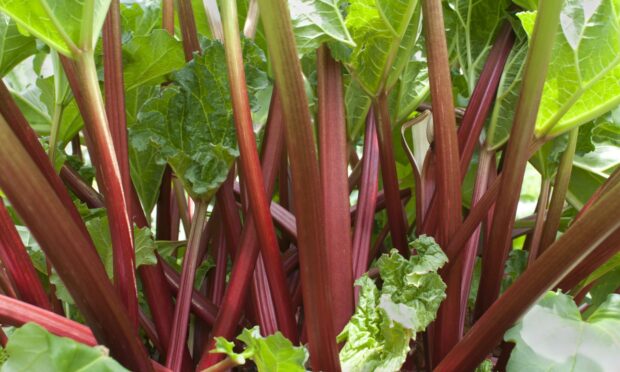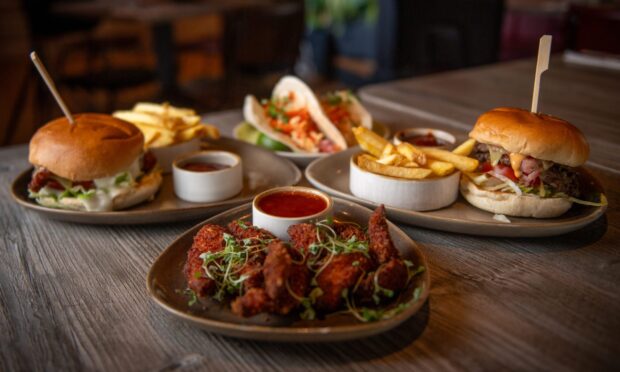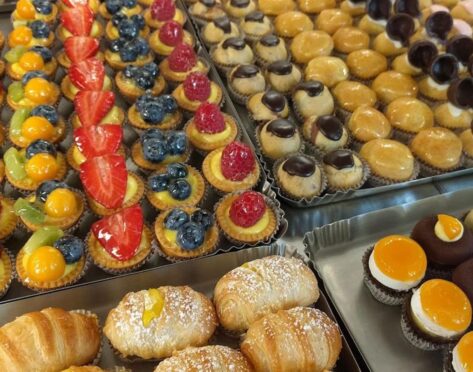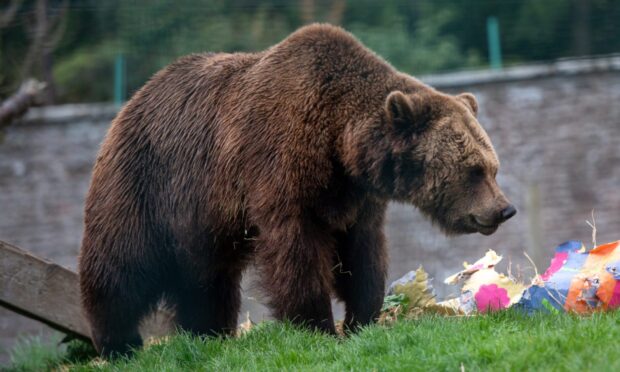You know I never win anything in a raffle. Well, I did once. And this week makes it twice!
Yes, this week a bottle of gin comes my way, courtesy of a Scots Guards’ raffle held at a veteran’s lunch.
The liquor is made in Edinburgh and is pink because it is infused with rhubarb.
It is a nice thing to drink at Christmas. Though not by me as I donate the thing to the neighbouring table who win nothing…
Meanwhile, my own rhubarb
Meanwhile guilt strikes as I remember the rhubarb plants that are sitting in a box by the back door.
There are three of them and they have been there some time. Given by a friend whose garden is overrun with the stuff.
From time to time I throw a pan of water over them. But now I must find somewhere to plant them.
Off to the polytunnel
Gardening boots are pulled on – and the littlest MacNaughties barks with excitement.
Bennie senses an outing and down to the polytunnel we go.
Where the seedlings are soaking up the sun. Among them, kale, broad bean, and beetroot.
Down we go. Woman and her best friend. Who is on a lead, because, as a puppy, he cannot yet be trusted not to run off.
Rhubarb likes something rich
A spot is found by the wall. It is slightly shaded, but still light enough.
Indeed, this was once a compost heap. Which is good. Rhubarb likes to have its feet in something rich.
Thousands of years ago it was grown in China and used in herbal remedies. The dried roots were apparently a good laxative whilst the stems were used to treat heartburn and stomach pain.
There is some dispute about how it eventually arrived in Scotland. It seems it was either brought back from Russia by a Dumfriesshire or an Ayrshire physician to the Tsar.
Whoever did the deed, by the 18th Century, rhubarb was being used in puddings. It would help that sugar was becoming more widely available at that time…
A monstrous cousin
I plan lots of pies and crumbles from my new plants. But whatever happens, do not confuse this fruit with its monstrous cousin.
Gunnera Tinctoria, or giant rhubarb, is definitely not edible.
This plant came across from South America, arriving in Victorian times as a striking addition to large estates.
It has large umbrella-like leaves and long red flowers – and is a striking specimen.
But reaching heights of over six foot tall and with sharp spiked stems, giant rhubarb can become a monstrous and invasive plant.
We may regret it
We have a couple growing in the bogland at the back of the garden. They were planted five years ago, and we may yet live to regret planting them.
No regrets we hope on the small rhubarb that is now in. With luck, this time next year it may bear fruit.
In the meantime, wee Bennie, tethered to a stick in the lawns, is growing restless. Enough gardening methinks. It is time for a stroll up the valley…










